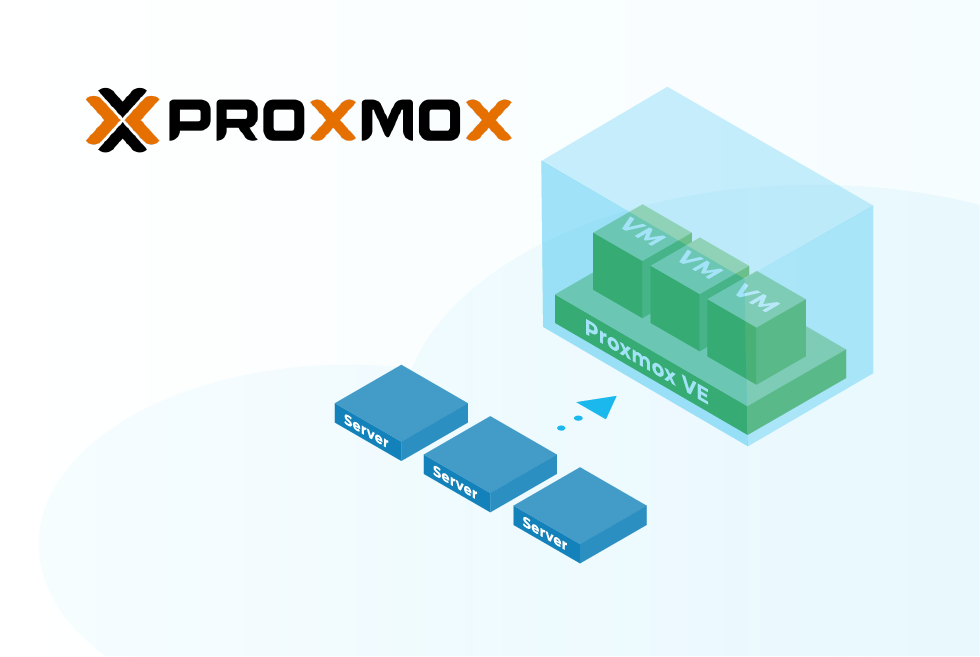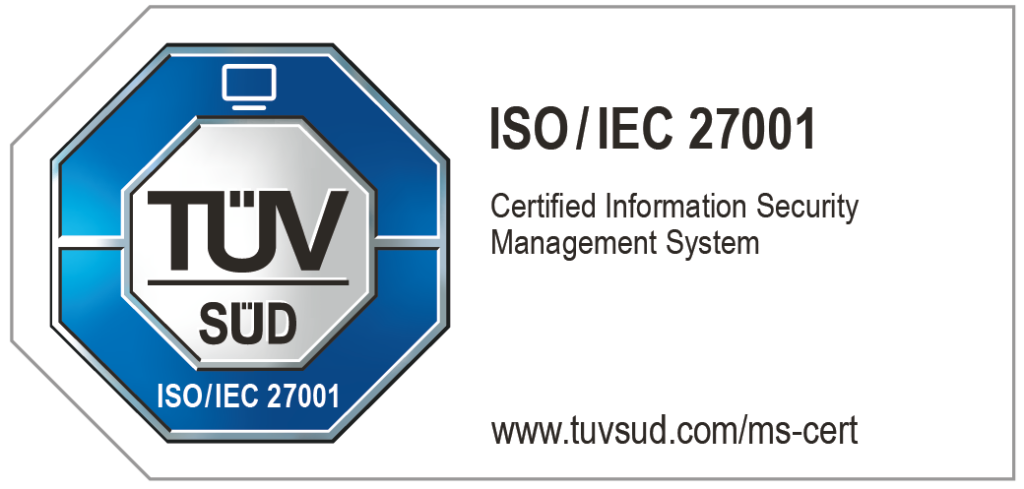OpenStack is considered the de facto standard for building cloud solutions on an open source basis and is used in a variety of use cases. However, there are other alternatives that should also be considered. One of these alternatives is Proxmox Virtual Environment (VE), a flexible and powerful open source virtualization solution. In this article, we explain the main features of Proxmox VE, compare it to OpenStack and give recommendations on which solution is best suited for different scenarios.
What is Proxmox?
Proxmox VE is an open source virtualization solution for cloud environments based on the latest version of Debian. Proxmox GmbH offers various products, including the Proxmox Backup Server, the Proxmox Mail Gateway Server and the Proxmox Virtual Environment. The Proxmox VE combines the following functions:
- Web based administration (see Figure 1)
- Combination of virtualization and containerization
- High Availability (HA)
- Backup
Proxmox VE offers numerous advantages. For example, it uses a specially adapted kernel with ZFS support for scalability, data minimization, snapshots and Data integrity. Ceph is also integrated, which further improves stability and reliability. The solution supports both KVM (Kernel-based Virtual Machine) for virtualization as well as LXC for containers. This enables resource-saving and flexible use.
Proxmox VE allows the operation of clusters with up to 32 hosts without dedicated management hosts. This is made possible by technologies such as CPU overcommitment[1] und RAM-ballooning[2] in order to provide efficient resource utilization. The solution requires an x86 CPU with virtualization capabilities (AMD-V/VT-x/VIA VT) and basic Debian driver support.
Proxmox VE offers a scalable, highly available and easy to manage solution that is suitable for small companies through to large data centers. It is therefore a complete solution consisting of a customized Linux kernel, dedicated services and helpful user tools (see Figure 2).

Technical capabilities
Proxmox VE combines KVM for virtualization and LXC for containers and also offers support for highly available storage with Ceph and ZFS. It is characterized by the following technical features[3] :
- Clustering: Integrated high-availability solutions and distributed storage management
- Virtualization support: Full support for KVM-based virtual machines with real-time migration capabilities
- Containerization: Seamless integration of Linux Containers (LXC) for resource-efficient deployments
- Web based administration: Intuitive web interface for complex infrastructure tasks
- Storage options: Support for various storage backends such as local, ZFS, NFS, iSCSI and Ceph
- VM live migration: Migration of virtual machines during operation
- SDN (Software-Defined Network) : Functionality: enables the creation of virtual zones and networks (VNets). This functionality simplifies advanced network configurations and the setup of multi-client capability
- Addditional features: ESXi Importer, Local USB+GPU-Passthrough, Spice + noVNC viewer, Advanced CPU Emulation, Cloudinit + Qemu agent, CPU Overcommitment and RAM-Ballooning
The Proxmox VE Software Stack is extensive and includes the following components, which are shown in Figure 3.
[3] Proxmox VE documentation (https://pve.proxmox.com/)

Proxmox VE also offers comprehensive backup technologies, such as the Proxmox backup server, which enables efficient backup and restore of virtual machines (VMs), containers and cluster data. Figure 4 shows some of the most important aspects of the Proxmox backup server.

Areas of application for the Proxmox Virtual Environment
Proxmox VE is a proven solution for on-premises clusters and data center operations. The area of application ranges from easy-to-manage private cloud operation to use cases that benefit from a modular approach to virtualization. Possible areas of application include clusters with specific security requirements (identity management, admin clusters) and production clusters with specific latency requirements.
Further areas of application:
- Small to medium-sized data centers: Proxmox VE offers a cost-effective alternative to solutions such as ESXi, with comparable functionality, especially for organizations with limited resources.
- Organizations that rely on open and transparent infrastructures: As an open source technology, Proxmox VE is continuously developed by an active community. This ensures that the maintainability of systems used in the long term remains assured, as the source code can be viewed. Transparent subscription models are available for companies that require professional support.
- Proxmox VE offers various packages and numerous LXC container templates for quick implementations, for example for network monitoring.
- Development teams with data protection requirements: Proxmox VE provides a secure, private infrastructure that allows complete control over data without the need to rely on external providers.
- Use cases with isolated or airgapped environments: Proxmox VE is well suited for the operation of redundant systems.
- Fast time to market: Proxmox VE is quickly ready for use, even on older hardware, and requires no additional licenses or complex management solutions such as vCenter (VMware).
Proxmox and OpenStack in comparison
Proxmox VE and OpenStack both offer virtualization and storage solutions and are community-supported open source technologies. They share some technical features, such as the use of KVM for virtualization and Ceph for storage.
For organizations that want to build or use a cloud infrastructure based on open source, both software solutions can be considered. In order to select the most suitable technology, it is important to know the differences between the two options. These mainly relate to their scalability, complexity and the resources required.
- Complexity and implementation: Proxmox VE is overall simpler and less complex to implement, which offers advantages for organizations with limited resources or technical expertise. OpenStack is more complex and therefore requires more technical expertise to use. However, it offers more capabilities and is designed for larger, resource-intensive environments.
- Scalability: Proxmox VE ist effizient skalierbar bis zu 32 Nodes, wobei min. 3 Nodes für die Hochverfügbarkeit der VMs und des internen Cephstorages erforderlich sind (s. Abbildung 5). OpenStack hingegen erfordert für größere Umgebungen mindestens 3 Nodes für die Verwaltung und zusätzliche Knoten für Rechen- und Storage-Leistung, wobei es bis zu 500 Nodes unterstützen kann.

As previously mentioned, Proxmox supports scaling of up to 32 nodes, whereby 3 nodes are required for administration and storage. OpenStack, on the other hand, can scale up to 500 nodes, but requires at least 3 nodes for administration.
- Resource requirements: Proxmox is less complex and more resource-efficient, making it cheaper and easier to implement in smaller environments. OpenStack requires more infrastructure and resources, which leads to greater complexity and higher operating costs.
- Architecture: Proxmox offers a complete solution for virtualization management, with KVM for virtualization and Ceph for storage. OpenStack follows a modular architecture with different components such as KVM and Ceph and is therefore better suited for larger and more complex environments.
- Network management: Proxmox supports bridged networks and VLANs. OpenStack offers advanced options such as virtual networks and Software-Defined Networking (SDN) with Open vSwitch, providing greater flexibility for complex network configurations.
- Multi-Tenancy: While Proxmox supports multi-tenancy through user and role controls, but not on a large scale[4]OpenStack is specially designed for multi-tenancy and offers robust, sophisticated functions for managing multiple users or tenants.
- Licence models: Proxmox uses AGPL v3 license, which stipulates that all changes to the software must be made available to the community. OpenStack, on the other hand, uses the Apache 2.0 license, which allows changes not necessarily to be made available to the community and enables the use of licensed code in proprietary software projects.
[4] https://www.oreilly.com/library/view/mastering-proxmox/9781788397605/fd548061-b6f7-4297-a0f3-8d8c2ddf12ba.xhtml





